
CVD & PECVD Furnace
Split Chamber CVD Tube Furnace with Vacuum Station CVD Machine
Item Number : KT-CTF12
Price varies based on specs and customizations
- Max. temperature
- 1200℃
- Furnace tube diameter
- 60mm
- Heating rate
- 0-20℃/min
Shipping:
Contact us to get shipping details Enjoy On-time Dispatch Guarantee.
Why Choose Us
Reliable PartnerEasy ordering process, quality products, and dedicated support for your business success.
Detail&Parts
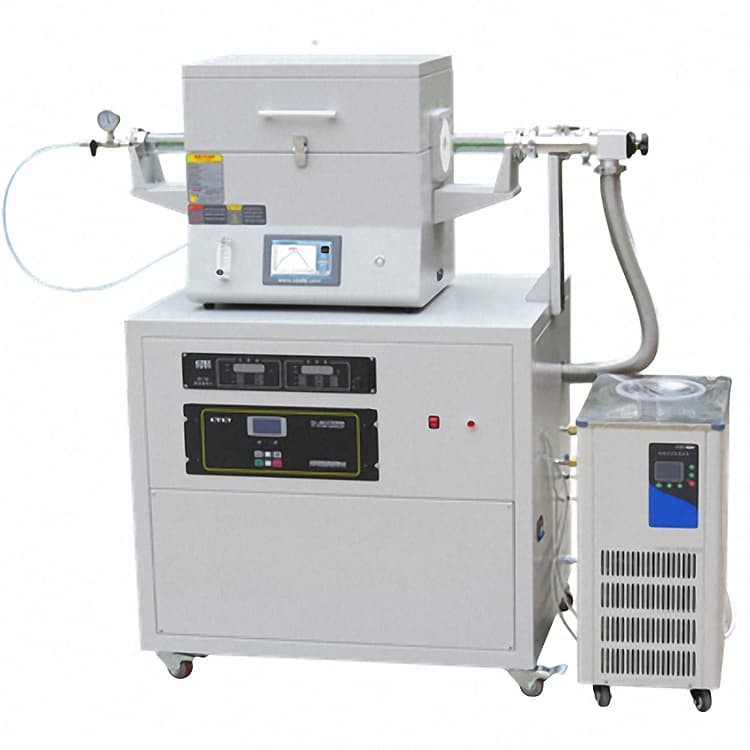
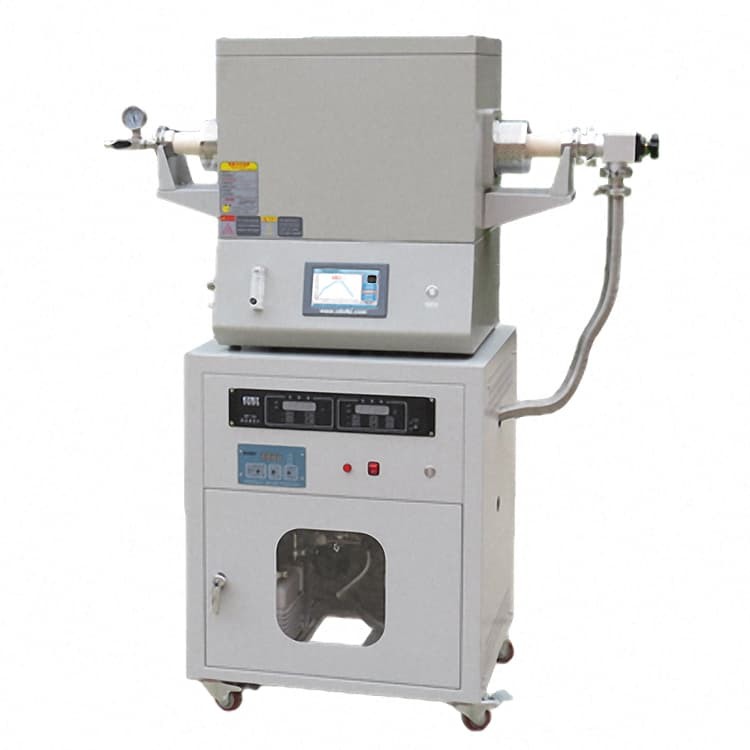
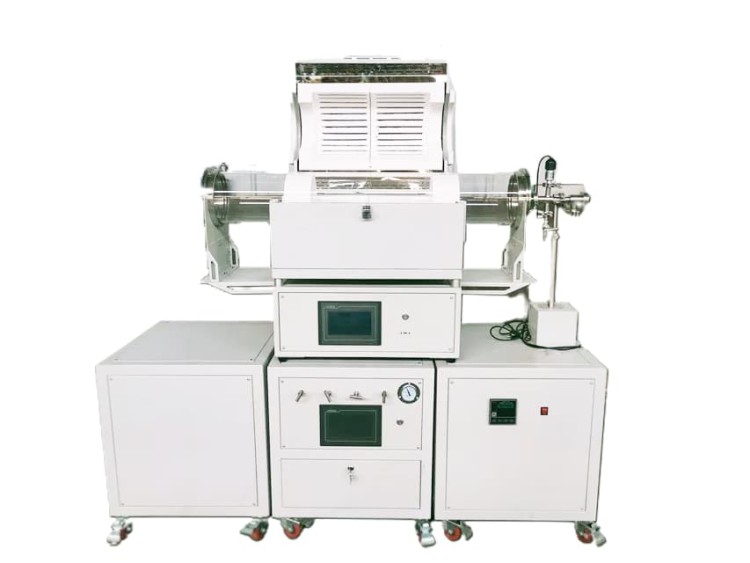
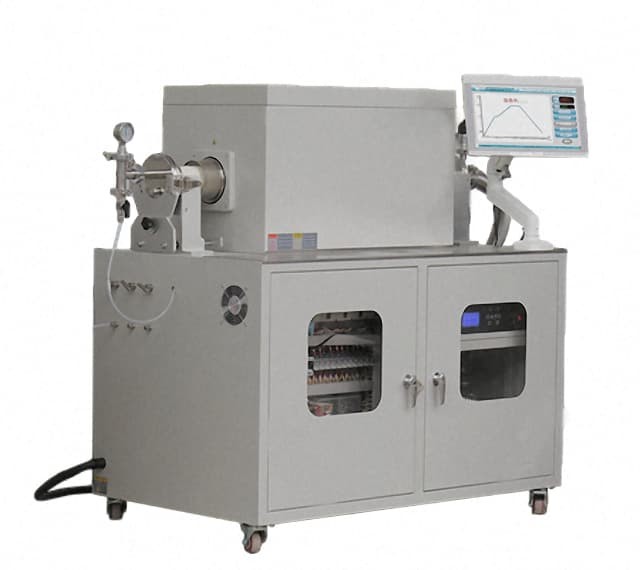
Introduction
Leveraging exceptional R&D and in-house manufacturing, KINTEK delivers advanced high-temperature furnace solutions tailored for diverse laboratory needs. The Split Chamber CVD Tube Furnace With Vacuum Station exemplifies this, offering a versatile and high-performance system meticulously designed for demanding Chemical Vapor Deposition (CVD) applications.
This furnace is engineered for precision and ease of use. Key features that benefit your research include:
- Split Furnace Chamber: Allows for straightforward access to reaction samples and facilitates rapid cooling, significantly enhancing experimental efficiency and throughput.
- High-Temperature Capability: Utilizes a high-purity quartz tube (standard 60 mm diameter, customizable options available) suitable for processes requiring temperatures up to 1200°C.
- Precise Gas Control: Equipped with a 4-channel MFC mass flow meter, providing accurate and stable delivery of source gases such as CH4, H2, O2, and N2 for consistent process results.
- Integrated Vacuum Station: Features a robust 4L/S rotary vane vacuum pump, capable of achieving a maximum vacuum pressure of 10 Pa, ensuring an optimal environment for various vacuum processes.
At KINTEK, we understand that unique experimental requirements demand flexible solutions. Our strong deep customization capability means that while this system is packed with advanced features ideal for materials science, semiconductor processing, and pioneering R&D, we can further tailor it to your specific needs. Our expertise spans a comprehensive product line, including Muffle, Tube, Rotary Furnaces, Vacuum & Atmosphere Furnaces, and advanced CVD/PECVD/MPCVD Systems, ensuring we provide the perfect solution for your work.
Ready to elevate your research capabilities or discuss a custom configuration for your CVD processes? Contact our specialists today to explore how the Split Chamber CVD Tube Furnace can be adapted to your precise experimental requirements and to request a quote.
Applications
The Split Chamber CVD Tube Furnace With Vacuum Station CVD Machine is a versatile and advanced piece of equipment designed for a variety of applications in the fields of material science, semiconductor manufacturing, and research and development. This machine is particularly useful for processes that require precise control over temperature, gas flow, and vacuum levels, making it an essential tool for high-quality material synthesis and processing.
- Nanomaterial Synthesis: The furnace is ideal for the growth of nanowires, nanofilms, and other nanostructured materials, which are crucial in the development of advanced electronic and optoelectronic devices.
- Vacuum Coating: It is extensively used for the deposition of thin films on various substrates, including metal films, ceramic films, and composite films, which are essential for enhancing the properties of materials in applications such as optics and electronics.
- Battery Material Processing: The furnace is suitable for the drying and sintering of battery materials, which is a critical step in the production of high-performance batteries.
- Material Drying and Sintering: It is used in the high-temperature sintering of ceramics, refractory materials, and specialty materials, ensuring the consolidation and densification of these materials.
- Atmosphere and Vacuum Heat Treatment: The vertical tube furnace configuration allows for quenching, annealing, and tempering of small steel parts, as well as vertical CVD coating, making it a valuable asset in metallurgical processes.
- Research and Development: It is widely used in universities, research institutes, and industrial and mining enterprises for conducting high-temperature experiments, atmosphere sintering, reducing atmosphere, and CVD/CVI experiments, contributing to the advancement of material science and technology.
Features
The Split Chamber CVD Tube Furnace With Vacuum Station CVD Machine is a sophisticated piece of equipment designed for advanced chemical vapor deposition (CVD) processes. This furnace integrates cutting-edge technology to enhance the efficiency and quality of film deposition, making it ideal for research and industrial applications. Here are the key features and their benefits:
- High Film Deposition Rate: Utilizing radio frequency glow technology, this furnace significantly boosts the film deposition rate, reaching up to 10Å/S. This rapid deposition is crucial for high-throughput production and research, saving time and increasing productivity.
- Large Area Uniformity: With advanced multi-point RF feed technology and specialized gas path distribution, the furnace ensures film uniformity of up to 8%. This uniformity is essential for creating consistent and high-quality coatings across large substrates, enhancing the reliability of the materials produced.
- Consistent Deposition: The design incorporates advanced semiconductor industry concepts, resulting in a deviation of less than 2% between substrates. This high level of consistency is vital for applications requiring precise and repeatable results, such as in the production of electronic components.
- Stable Process Control: The equipment's high stability ensures the continuity and consistency of the CVD process. This reliability is critical for maintaining process integrity and reducing the risk of defects or failures during operation.
- Intelligent Control System: Patented by Bonage, the integrated control system includes a high-performance temperature control system that uses a closed-loop negative feedback mechanism. This system, combined with high-quality imported electrical components, enhances the overall performance and reliability of the equipment, making it virtually maintenance-free.
- Versatile Applications: Suitable for depositing various types of films, including metal, ceramic, and composite films, the furnace supports continuous growth processes and can be easily expanded with additional functions like plasma cleaning and etching. This versatility makes it a valuable asset for diverse research and production needs.
Principle
The Split Chamber CVD Tube Furnace With Vacuum Station CVD Machine is a high-temperature vacuum furnace used for chemical vapor deposition (CVD) processes. CVD is a process in which a thin film of material is deposited on a substrate by the chemical reaction of a gas or vapor. The Split Chamber CVD Tube Furnace With Vacuum Station CVD Machine uses a split furnace chamber to allow for easy access to the substrate during the CVD process. The vacuum station is used to create a vacuum in the furnace chamber, which helps to remove impurities and improve the quality of the deposited film.
Advantages
- Intuitive sample observation and rapid cooling: Split furnace chamber allows for direct observation of reaction samples and quick cooling.
- High temperature capability: Max working temperature of up to 1200℃ for versatile applications.
- Precise gas control: 4-channel MFC mass flow meter with CH4, H2, O2, and N2 sources ensures accurate and stable gas supply.
- Vacuum compatibility: Vacuum station with a 4L/S rotary vane vacuum pump achieves a maximum vacuum pressure of up to 10Pa, enabling various vacuum processes.
- High-speed heating and cooling: Furnace chamber sliding system facilitates rapid heating and cooling for efficient sample processing.
- Advanced temperature control: PID programmable temperature control with excellent accuracy, remote control, and centralized control capabilities.
- User-friendly interface: CTF Pro controller with a 7-inch TFT touch screen offers intuitive program setting and data analysis.
- Versatile vacuum setup: Stainless steel vacuum flange with adaptable ports accommodates different vacuum pump stations for customized vacuum environments.
- Energy efficiency: Water cooling system and gas afterflow design minimize energy consumption.
- Wide applicability: Suitable for CVD, diffusion, and other thermo-treatments under vacuum and atmosphere protection.
Safety Advantage
- Kindle Tech tube furnace owns over current protection and over temperature alarming function, furnace will turn off the power automatically
- Furnace build in thermal couple detecting function, furnace will stop heating and alarm will be on once broken or failure detected
- KT-CTF12 Pro support power failure restarting function,furnace will resume the furnace heating program when power is incoming after failure
Technical specifications
| Furnace model | KT-CTF12-60 |
|---|---|
| Max. temperature | 1200℃ |
| Constant work temperature | 1100℃ |
| Furnace tube material | High purity quartz |
| Furnace tube diameter | 60mm |
| Heating zone length | 1x450mm |
| Chamber material | Japan alumina fiber |
| Heating element | Cr2Al2Mo2 wire coil |
| Heating rate | 0-20℃/min |
| Thermal couple | Build in K type |
| Temperature controller | Digital PID controller/Touch screen PID controller |
| Temperature control accuracy | ±1℃ |
| Sliding distance | 600mm |
| Gas precise control unit | |
| Flow meter | MFC mass flow meter |
| Gas channels | 4 channels |
| Flow rate | MFC1: 0-5SCCM O2 MFC2: 0-20SCMCH4 MFC3: 0- 100SCCM H2 MFC4: 0-500 SCCM N2 |
| Linearity | ±0.5% F.S. |
| Repeatability | ±0.2% F.S. |
| Pipe line and valve | Stainless steel |
| Maximum Operating Pressure | 0.45MPa |
| Flow meter controller | Digital Knob controller/Touch screen controller |
| Standard vacuum unit (Optional) | |
| Vacuum pump | Rotary vane vacuum pump |
| Pump flow rate | 4L/S |
| Vacuum suction port | KF25 |
| Vacuum gauge | Pirani/Resistance silicon vacuum gauge |
| Rated vacuum pressure | 10Pa |
| High vacuum unit(Optional) | |
| Vacuum pump | Rotary vane pump+Molecular pump |
| Pump flow rate | 4L/S+110L/S |
| Vacuum suction port | KF25 |
| Vacuum gauge | Compound vacuum gauge |
| Rated vacuum pressure | 6x10-5Pa |
| Above specifications and setups can be customized | |
Standard Package
| No. | Description | Quantity |
|---|---|---|
| 1 | Furnace | 1 |
| 2 | Quartz tube | 1 |
| 3 | Vacuum flange | 2 |
| 4 | Tube thermal block | 2 |
| 5 | Tube thermal block hook | 1 |
| 6 | Heat resistant glove | 1 |
| 7 | Precise gas control | 1 |
| 8 | Vacuum unit | 1 |
| 9 | Operation manual | 1 |
Optional Setup
- In tube gases detecting and monitoring,like H2, O2 and so on
- Independent furnace temperature monitoring and recording
- RS 485 communication port for PC remote control and data exporting
- Insert gases feeding flow rate control,like mass flowmeter and float flowmeter
- Touch screen temperature controller with versatile operator friendly functions
- High vacuum pump station setups, like vane vacuum pump,molecular pump,diffusion pump
For inquiries about customization or to learn more about how KINTEK can support your specific research needs, please fill out our contact form or reach out to our expert team.
FAQ
What Is A Tube Furnace And How Does It Work?
What Are The Main Applications Of Multi-zone Tube Furnaces?
What Is The Principle Of An MPCVD Machine?
What Is A PECVD Machine Used For?
What Are The Main Applications Of A Vacuum Furnace?
What Is A Vertical Tube Furnace?
What Is An Atmosphere Furnace Used For?
What Is A Vacuum Induction Furnace?
What Is The Principle Of A CVD Machine?
What Are The Main Applications Of Tube Furnaces?
What Are The Key Features Of Multi-zone Tube Furnaces?
What Are The Advantages Of Using An MPCVD Machine?
What Are The Main Types Of PECVD Machines?
What Are The Key Features Of A Vacuum Furnace?
What Are The Applications Of A Vertical Tube Furnace?
What Are The Key Features Of An Atmosphere Furnace?
What Are The Main Applications Of Vacuum Induction Furnaces?
What Are The Advantages Of Using A CVD Machine?
What Are The Advantages Of Using A Tube Furnace?
How Does A Multi-zone Tube Furnace Work?
What Are The Key Applications Of MPCVD Machines?
How Does A PECVD Machine Work?
How Does A Vacuum Furnace Work?
What Are The Advantages Of A Vertical Tube Furnace?
How Does An Atmosphere Furnace Work?
How Does A Vacuum Induction Furnace Work?
What Are The Applications Of A CVD Machine?
What Types Of Tube Furnaces Are Available?
What Are The Advantages Of Using A Multi-zone Tube Furnace?
What Are The Main Components Of An MPCVD Machine?
What Are The Key Features Of A PECVD Machine?
What Are The Advantages Of Using A Vacuum Furnace?
How Does A Vertical Tube Furnace Work?
What Are The Advantages Of Using An Atmosphere Furnace?
What Are The Advantages Of Using A Vacuum Induction Furnace?
What Are The Key Features Of A CVD Machine?
What Temperature Ranges Can Tube Furnaces Achieve?
What Types Of Multi-zone Tube Furnaces Are Available?
How Does An MPCVD Machine Enhance Energy Efficiency?
What Are The Advantages Of Using A PECVD Machine?
What Types Of Materials Can Be Processed In A Vacuum Furnace?
What Types Of Vertical Tube Furnaces Are Available?
What Types Of Gases Can Be Used In An Atmosphere Furnace?
What Types Of Vacuum Induction Furnaces Are Available?
What Types Of CVD Machines Are Available?
Can Tube Furnaces Operate Under Different Atmospheres?
Why Is MPCVD Preferred For Diamond Growth?
What Materials Can Be Deposited Using A PECVD Machine?
What Is The Difference Between Hot Wall And Cold Wall Vacuum Furnaces?
Why Choose A Vertical Tube Furnace Over A Horizontal One?
What Safety Features Are Available In Advanced Atmosphere Furnaces?
Why Is Temperature Control Important In Vacuum Induction Furnaces?
What Makes KINTEK Tube Furnaces Special?
Why Is PECVD Preferred Over Other Deposition Methods?
Can Vacuum Furnaces Be Customized For Specific Applications?
What Temperature Ranges Can Vertical Tube Furnaces Achieve?
What Materials Can Be Processed In A Vacuum Induction Furnace?
Are Vertical Tube Furnaces Customizable?
How Does The Vacuum Environment Benefit Material Processing?
4.9
out of
5
Incredible precision and speed! This furnace exceeded my expectations for lab efficiency.
4.8
out of
5
Top-notch quality and durability. A game-changer for our research team!
4.7
out of
5
Fast delivery and easy setup. The vacuum station works flawlessly.
4.9
out of
5
Worth every penny! The split chamber design is a brilliant innovation.
4.8
out of
5
Perfect for high-temperature applications. Highly recommend for advanced labs.
4.9
out of
5
Exceptional performance and reliability. Our experiments have never been smoother.
4.7
out of
5
Love the compact design! Saves space without compromising on power.
4.8
out of
5
The vacuum seal is impeccable. No leaks, no issues—just perfect results.
4.9
out of
5
Cutting-edge technology at its finest. A must-have for serious researchers.
4.8
out of
5
Superb value for money. The build quality is outstanding.
4.7
out of
5
Quick and efficient service. The furnace arrived in perfect condition.
4.9
out of
5
The split chamber feature is revolutionary. Makes multitasking a breeze.
4.8
out of
5
Reliable and consistent performance. Our lab productivity has soared.
4.7
out of
5
Easy to operate and maintain. A fantastic investment for any lab.
4.9
out of
5
The temperature control is spot-on. Perfect for delicate experiments.
4.8
out of
5
Durable and built to last. This machine is a workhorse.
4.9
out of
5
Innovative design meets superior functionality. Absolutely love it!
REQUEST A QUOTE
Our professional team will reply to you within one business day. Please feel free to contact us!
Related Products

1200℃ Split Tube Furnace Laboratory Quartz Tube Furnace with Quartz Tube
Discover KINTEK's 1200℃ Split Tube Furnace with quartz tube for precise high-temperature lab applications. Customizable, durable, and efficient. Get yours now!

Multi Heating Zones CVD Tube Furnace Machine for Chemical Vapor Deposition Equipment
KINTEK's Multi-Zone CVD Tube Furnaces offer precision temperature control for advanced thin film deposition. Ideal for research and production, customizable for your lab needs.

Custom Made Versatile CVD Tube Furnace Chemical Vapor Deposition CVD Equipment Machine
KINTEK's CVD Tube Furnace offers precision temperature control up to 1600°C, ideal for thin film deposition. Customizable for research and industrial needs.

Slide PECVD Tube Furnace with Liquid Gasifier PECVD Machine
KINTEK Slide PECVD Tube Furnace: Precision thin film deposition with RF plasma, rapid thermal cycling, and customizable gas control. Ideal for semiconductors and solar cells.

Inclined Rotary Plasma Enhanced Chemical Deposition PECVD Tube Furnace Machine
KINTEK's PECVD coating machine delivers precision thin films at low temperatures for LEDs, solar cells & MEMS. Customizable, high-performance solutions.

Split Multi Heating Zone Rotary Tube Furnace Rotating Tube Furnace
Precision Split Multi Heating Zone Rotary Tube Furnace for high-temperature material processing, featuring adjustable tilt, 360° rotation, and customizable heating zones. Ideal for labs.

1700℃ High Temperature Laboratory Tube Furnace with Quartz or Alumina Tube
KINTEK's Tube Furnace with Alumina Tube: Precision heating up to 1700°C for material synthesis, CVD, and sintering. Compact, customizable, and vacuum-ready. Explore now!

Laboratory Vacuum Tilt Rotary Tube Furnace Rotating Tube Furnace
KINTEK Laboratory Rotary Furnace: Precision heating for calcination, drying, sintering. Customizable solutions with vacuum & controlled atmosphere. Enhance research now!

High Pressure Laboratory Vacuum Tube Furnace Quartz Tubular Furnace
KINTEK High Pressure Tube Furnace: Precision heating up to 1100°C with 15Mpa pressure control. Ideal for sintering, crystal growth, and lab research. Customizable solutions available.

Inclined Rotary Plasma Enhanced Chemical Deposition PECVD Tube Furnace Machine
Advanced PECVD Tube Furnace for precise thin film deposition. Uniform heating, RF plasma source, customizable gas control. Ideal for semiconductor research.

Vacuum Sealed Continuous Working Rotary Tube Furnace Rotating Tube Furnace
Precision rotary tube furnace for continuous vacuum processing. Ideal for calcination, sintering, and heat treatment. Customizable up to 1600℃.

1400℃ Controlled Inert Nitrogen Atmosphere Furnace
KT-14A Controlled Atmosphere Furnace for labs & industry. 1400°C max temp, vacuum sealing, inert gas control. Customizable solutions available.

High Temperature Muffle Oven Furnace for Laboratory Debinding and Pre Sintering
KT-MD Debinding & Pre-Sintering Furnace for ceramics - precise temperature control, energy-efficient design, customizable sizes. Boost your lab efficiency today!

Spark Plasma Sintering SPS Furnace
Discover KINTEK's advanced Spark Plasma Sintering (SPS) Furnace for rapid, precise material processing. Customizable solutions for research and production.

RF PECVD System Radio Frequency Plasma Enhanced Chemical Vapor Deposition
KINTEK RF PECVD System: Precision thin-film deposition for semiconductors, optics & MEMS. Automated, low-temperature process with superior film quality. Custom solutions available.

CF KF Flange Vacuum Electrode Feedthrough Lead Sealing Assembly for Vacuum Systems
Reliable CF/KF flange vacuum electrode feedthrough for high-performance vacuum systems. Ensures superior sealing, conductivity & durability. Customizable options available.
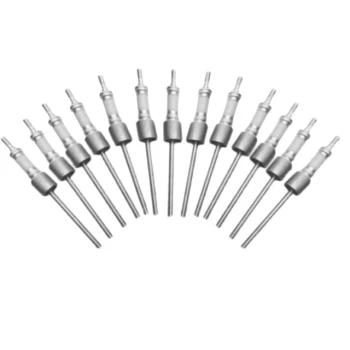
Ultra Vacuum Electrode Feedthrough Connector Flange Power Lead for High Precision Applications
Ultra-Vacuum Electrode Feedthroughs for reliable UHV connections. High-sealing, customizable flange options, ideal for semiconductor & space applications.
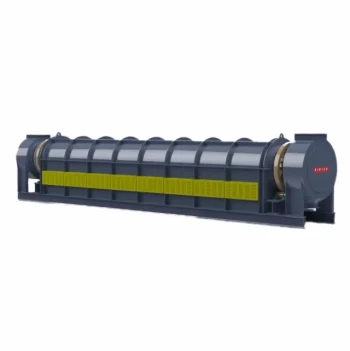
Electric Rotary Kiln Pyrolysis Furnace Plant Machine Small Rotary Kiln Calciner
KINTEK Electric Rotary Kiln: Precise 1100℃ calcination, pyrolysis & drying. Eco-friendly, multi-zone heating, customizable for lab & industrial needs.
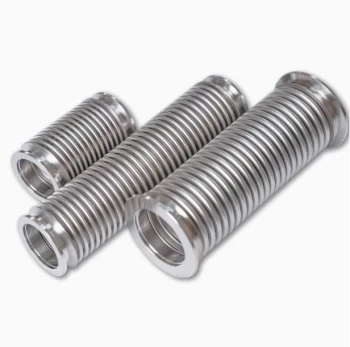
High Performance Vacuum Bellows for Efficient Connection and Stable Vacuum in Systems
KF ultra-high vacuum observation window with high borosilicate glass for clear viewing in demanding 10^-9 Torr environments. Durable 304 stainless steel flange.